MP Board Solutions Class 9 Science Chapter 4 – Structure of the Atom
MP Board Solutions for Class 9 Science Chapter 4 – Structure of the Atom are essential for understanding key Chemistry concepts in the MPBSE curriculum. These well-structured answers help students grasp topics like atomic models, electronic configuration, valency, isotopes, and more. Designed as per the latest syllabus, these solutions strengthen conceptual clarity and improve exam preparation. Ideal for revision and practice, they encourage logical thinking and scientific understanding, making them a valuable study tool for scoring well in Class 9 Science exams.
MP Board Solutions Class 9 Science – Structure of the Atom – Exercise Images
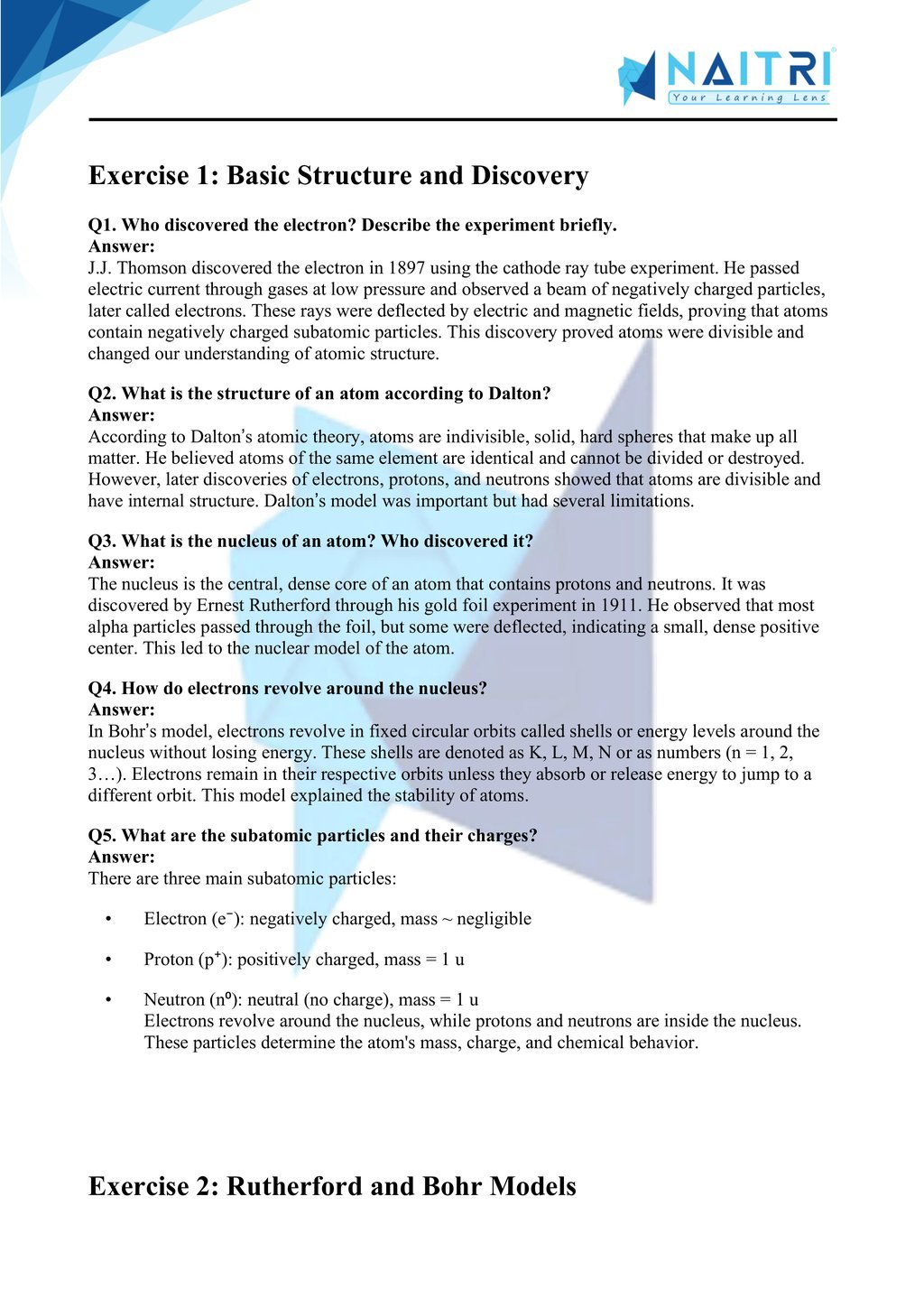
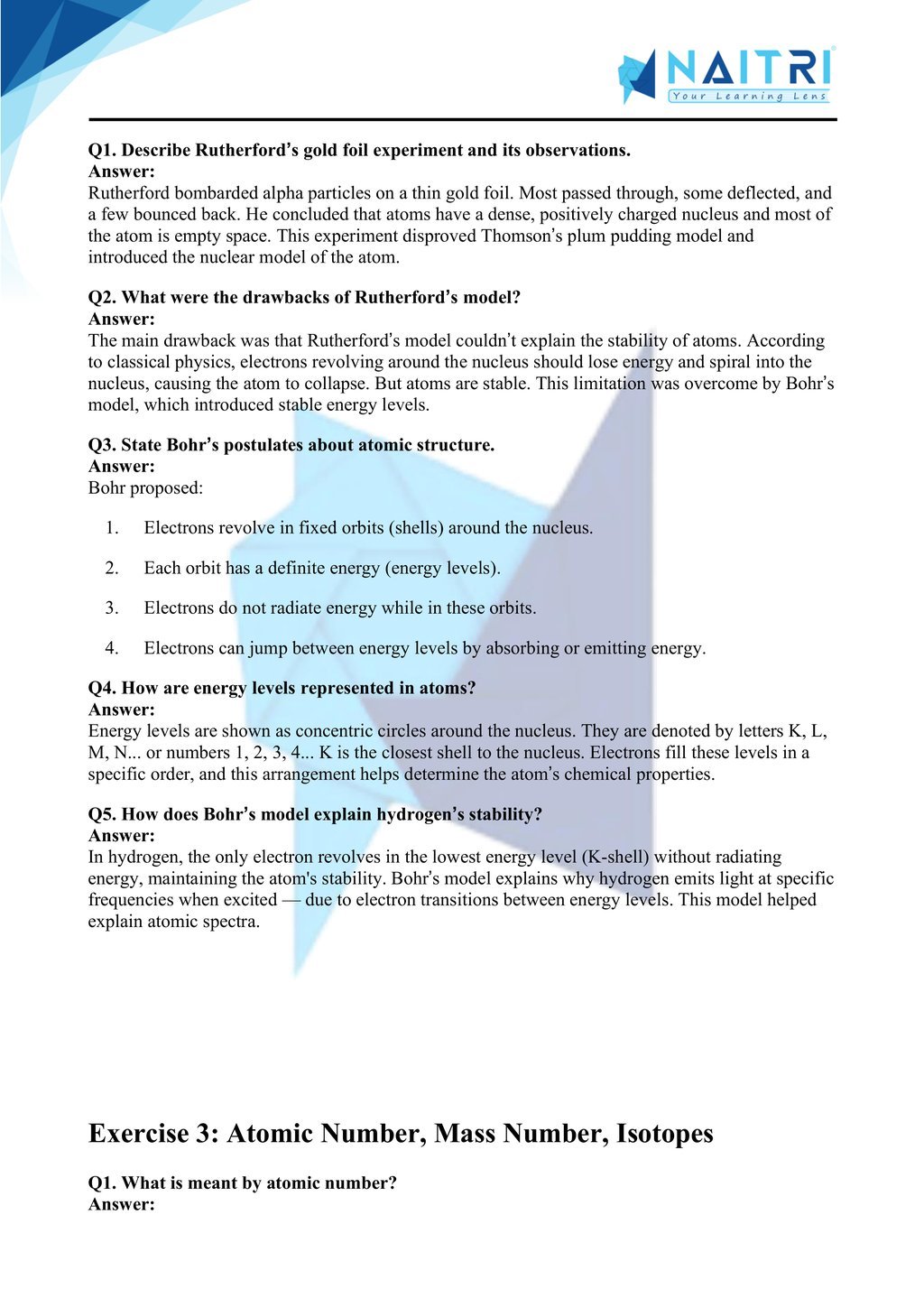
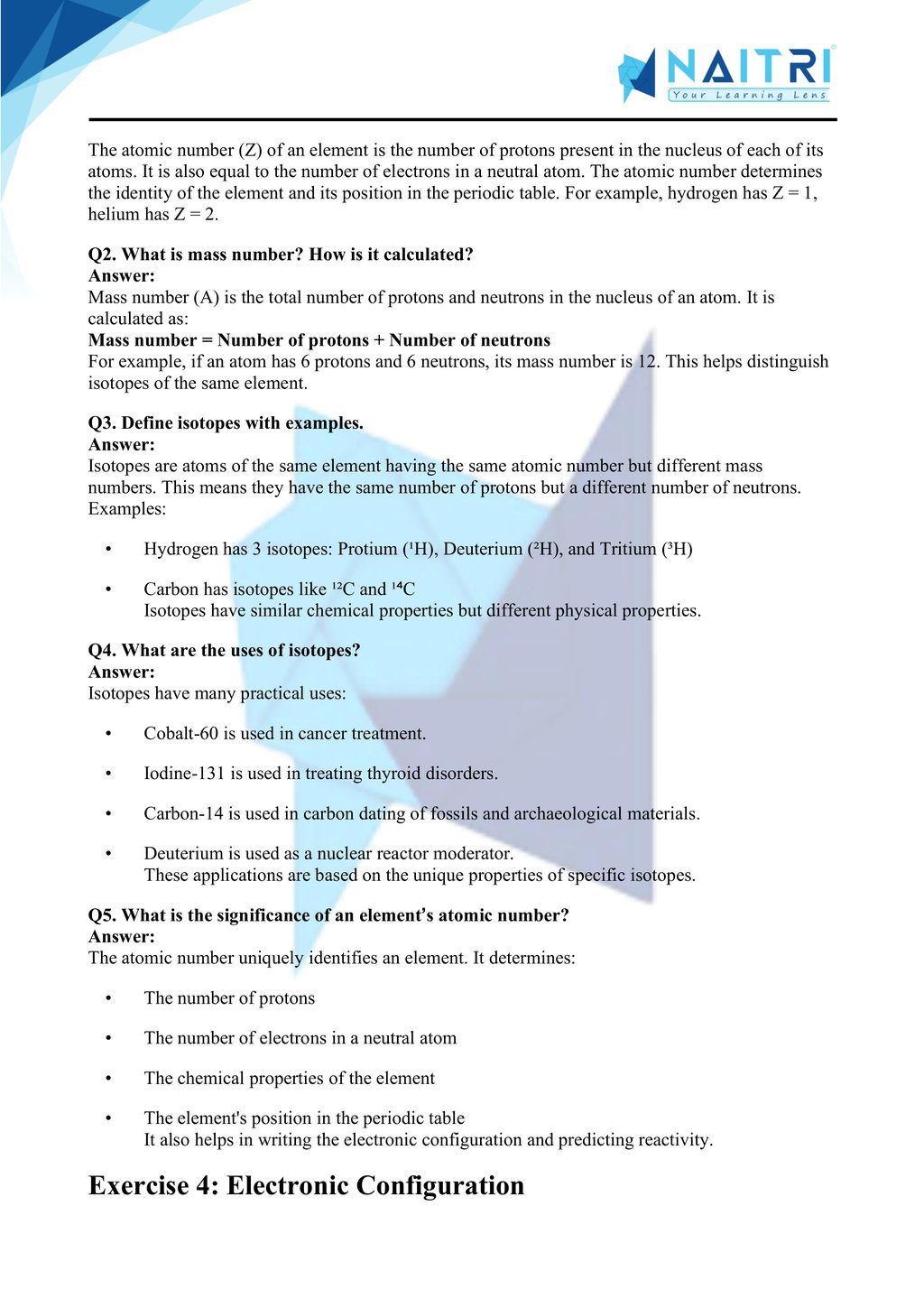
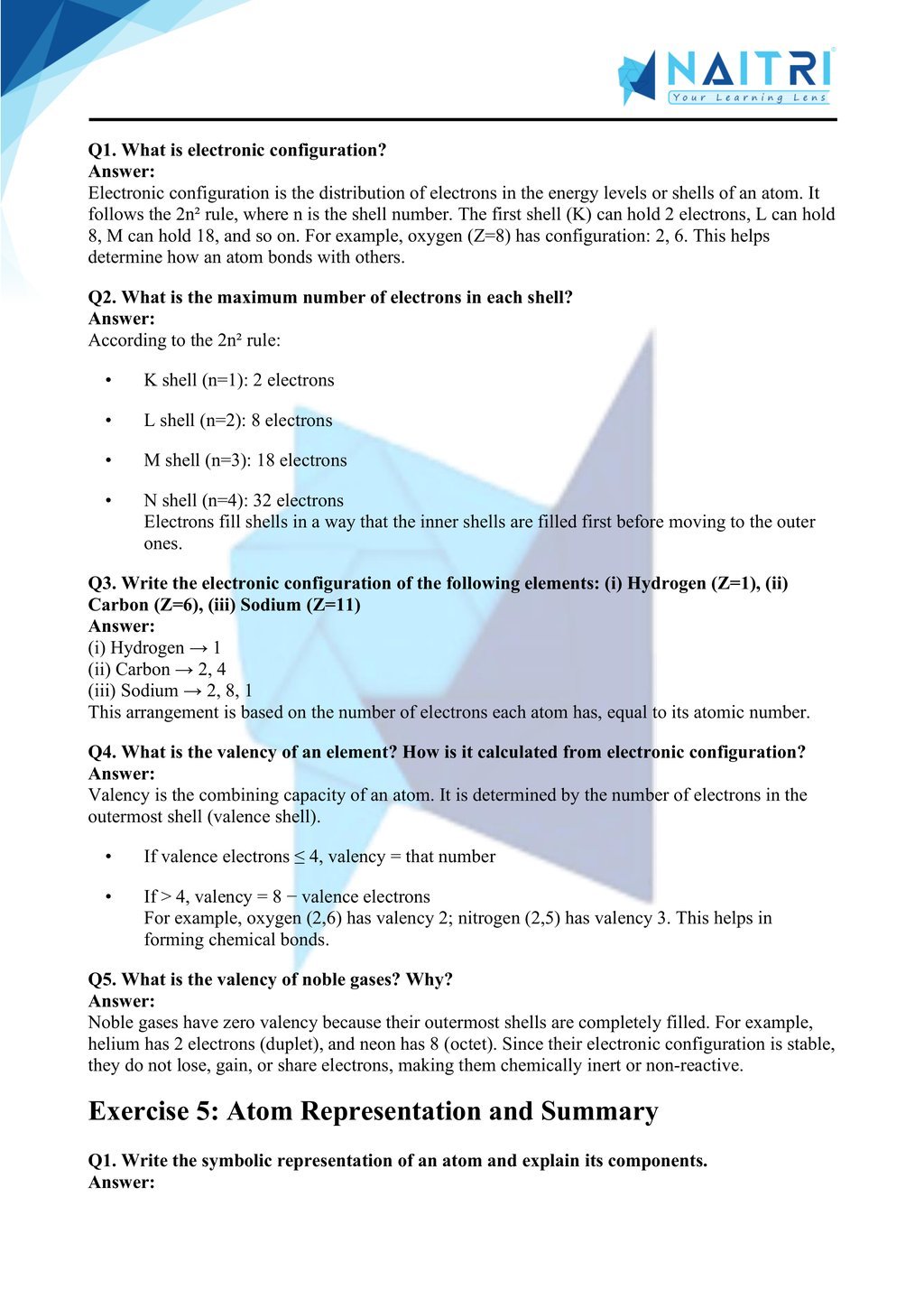
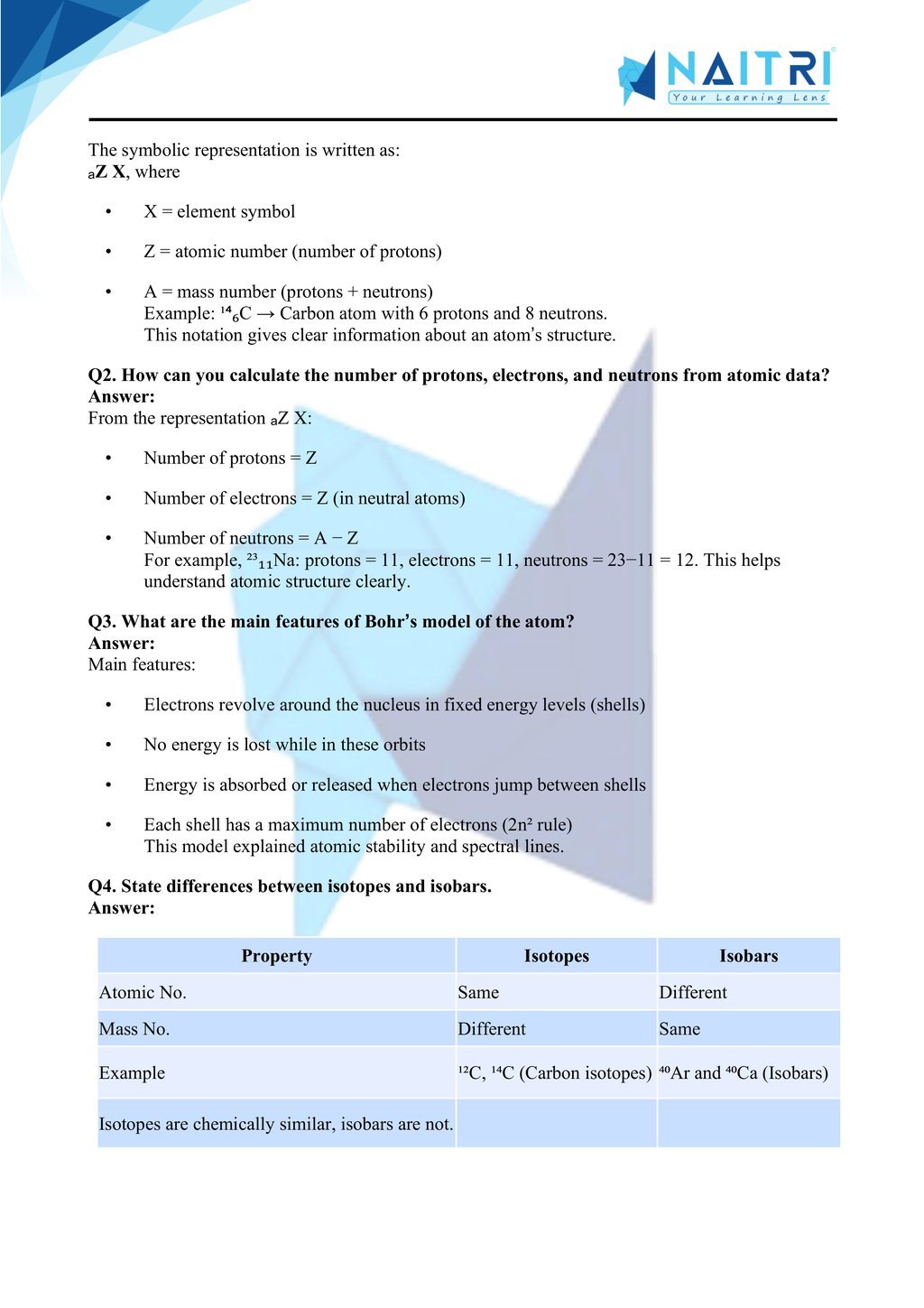
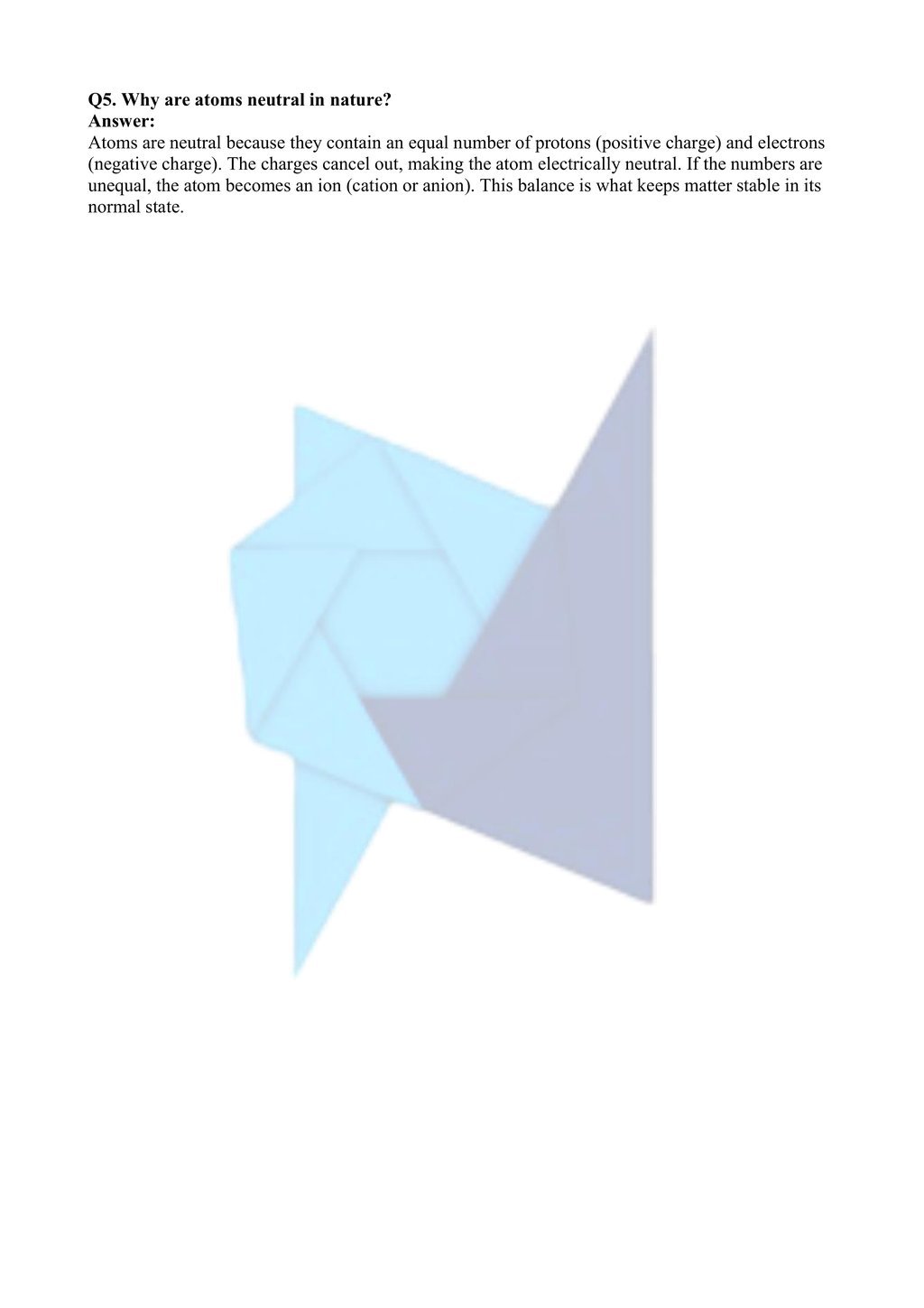
Experience Science Like Never Before – With AR!
Understanding Structure of the Atom is now more exciting and immersive! With the NAITRI App, you can explore complex science concepts through Augmented Reality (AR). Explore atomic models, orbitals spin, and subatomic particles in motion — right in front of you. Our AR-powered lessons make learning interactive, 3D, and fun, helping you retain concepts better and enjoy every topic.



Visualize . Interact . Understand . The future of learning is here
Structure of the Atom – Important Questions with Answers
1. Who discovered the electron?
Answer: J. J. Thomson via cathode ray experiments.
2. Name the three subatomic particles.
Answer: Electron, proton, neutron.
3. Who discovered the atomic nucleus?
Answer: Ernest Rutherford.
4. Two observations from Rutherford’s α-scattering experiment.
Answer: Most α-particles passed straightstraight through; a few were deflected at large angles.
5. Conclusions from Rutherford’s experiment.
Answer: Atom has a small, dense nucleus and is mostly empty space.
6. Limitations of Rutherford’s model.
Answer: Could not explain atomic spectra or electron stability.
7. What did Bohr propose?
Answer: Electrons orbit the nucleus in fixed energy levels.
8. Define energy level or shell.
Answer: Specific, stable circular path for electrons around the nucleus.
9. Who discovered the neutron?
Answer: James Chadwick in 1932.
10. Describe neutron’s charge and mass.
Answer: Neutron is neutral; mass ≈ proton mass.
11. What is atomic number?
Answer: Number of protons in the nucleus.
12. What is mass number?
Answer: Total of protons + neutrons.
13. Define isotopes with example.
Answer: Atoms with same atomic number but different mass (e.g., ¹₂He & ³₂He).
14. Define isobars with example.
Answer: Atoms with same mass number but different atoms (e.g., ⁴⁰Ar & ⁴⁰Ca).
15. Maximum electron count in nth shell.
Answer: 2n² electrons.
16. Electron distribution in chlorine (Z = 17).
Answer: 2, 8, 7.
17. What is valency?
Answer: Combining capacity based on gain, loss, or sharing of electrons.
18. Valency of nitrogen and oxygen.
Answer: Nitrogen = 3, Oxygen = 2.
19. Define electronic configuration.
Answer: Arrangement of electrons in shells.
20. Write electronic configuration of sodium (Z = 11).
Answer: 2, 8, 1.
21. Importance of neutrons.
Answer: Add to mass and stabilize nucleus.
22. Mention one application of isotopes.
Answer: I-131 in treating thyroid disorders.
23. How does Bohr’s model explain atom stability?
Answer: Electrons in fixed orbits don’t radiate energy.
24. Atomic models before and after discovery of neutron.
Answer: Thomson (plum pudding) → Rutherford (nucleus) → Bohr → Chadwick discovers neutron.
25. Define nuclear atom.
Answer: An atom with central nucleus of protons/neutrons and orbiting electrons.
Structure of the Atom explores the internal architecture of atoms, explaining discoveries by scientists like Thomson, Rutherford, and Bohr. It introduces electrons, protons, neutrons, isotopes, and isobars—crucial for understanding chemical behavior. This chapter deepens students’ understanding of matter at a microscopic level and helps them relate atomic properties to practical applications like fertilizers, medicines, and nuclear science.
Related Chapters You May Like
Download Naitri App
Easy, Visual Learning — Right on Your Phone
Learn with Augmented Reality! The Naitri app makes CBSE and MP Board concepts interactive and fun — even in low-resource settings. Watch lessons, complete homework, take tests, and track progress — all in one place. Anytime. Anywhere.
Available on








